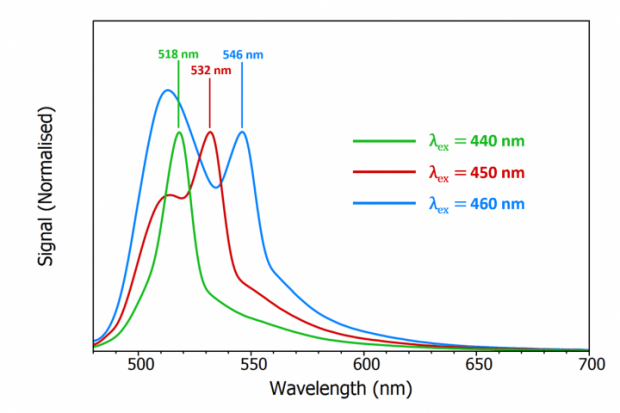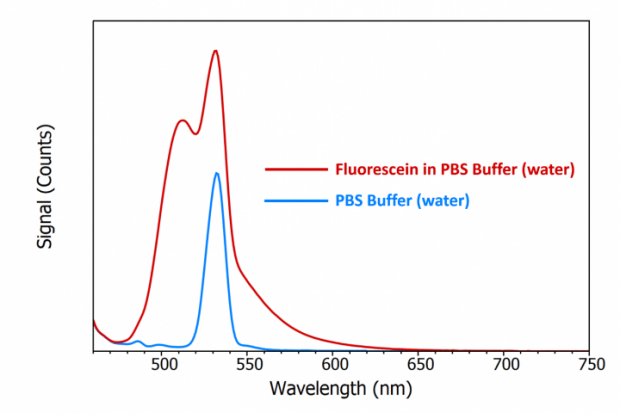Using light, two interesting techniques called fluorescence and Raman spectroscopy may expose the inner workings of molecules and materials. They differ in their methods of operation and the information they offer, but they have the same goal of harvesting photon power. We may more clearly think about their key distinctions as well as their unique advantages and applications by contrasting and comparing these two scientific techniques.
Being aware of these variations might be useful to you whether you’re an experienced researcher or an inquisitive student while selecting the right equipment for your scientific inquiries. So let’s start this illuminating adventure to sort out the differences between Raman and fluorescence spectroscopy.
What is fluorescence spectroscopy?
Spectroscopy In science, fluorescence is a useful tool. It aids in our understanding of how atoms and molecules behave. Like a glow-in-the-dark sticker, a material may produce its light when exposed to light.
Here’s how it works: Atoms and molecules have energy levels. When they absorb light, their electrons jump to higher energy levels. But they don’t like staying there. They quickly drop back down, releasing energy as light. This light is called fluorescence.
Scientists use spectroscopy to measure this fluorescence. They shine a light on a sample and collect the emitted light. By analyzing the colors and intensities of the emitted light, they can learn a lot about the sample.
Fluorescence spectroscopy is handy in various fields. In medicine, it helps diagnose diseases by tagging specific molecules with fluorescent markers. Environmental scientists use it to detect pollutants. Even forensic scientists use it to analyze crime scene evidence.

What is Raman spectroscopy?
Raman spectroscopy is a fascinating technique used in science to analyze materials. It’s like a molecular fingerprint scanner. When you shine laser light on a substance, some of the light scatters in different directions. Raman spectroscopy studies this scattered light to reveal information about the substance.
Here’s the trick: When laser light interacts with molecules, their bonds vibrate. These vibrations cause changes in the scattered light’s energy. By measuring these changes, scientists can identify the molecules present and even learn about their structure.
Raman spectroscopy is quite versatile. It is beneficial in many disciplines, including chemistry, biology, and materials science. It is used by chemists to detect unidentified chemicals and by biologists to investigate cells and tissues. It is even used by art restorers to look at the pigments in antique paintings.
The best thing is that Raman spectroscopy leaves the material intact, allowing you to preserve it for additional investigation. It’s similar to illuminating the mysteries of stuff without causing any harm.
Difference between fluorescence and raman spectroscopy
Let’s explore the main variations between these two remarkable approaches.
Principle of Operation
Fluorescence Spectroscopy
All that matters in fluorescence spectroscopy is how light and matter interact. When a molecule absorbs light at a specific wavelength, its electrons get excited, jumping to higher energy levels. But these electrons don’t like to stay up there for long; they quickly return to their original state, emitting light in the process. This emitted light, called fluorescence, has longer wavelengths than the absorbed light.
Raman Spectroscopy
Raman spectroscopy, on the other hand, examines how light scatters when it interacts with molecules. When a laser beam hits a sample, most of the light remains unchanged (Rayleigh scattering), but a tiny fraction undergoes Raman scattering. This scattered light has different energy levels than the incident light due to molecular vibrations and rotations.
Information Obtained
Fluorescence Spectroscopy
Fluorescence spectroscopy mainly provides information about the electronic structure and energy levels of molecules. It’s excellent for identifying specific molecules or compounds that fluoresce. It is widely used by researchers in the fields of biology, chemistry, and environmental science, frequently to identify and measure materials like fluorescent dyes, proteins, and contaminants.
Raman Spectroscopy:
Raman spectroscopy is a molecular fingerprinting technique. It provides details on the chemistry, structure, and bonding of molecules. Researchers may determine the sorts of atoms present and even their configurations inside a molecule by analyzing the energy changes of scattered light. Raman spectroscopy may be used to analyze a variety of substances, including solids, liquids, and gases. It has uses in chemistry, material science, and forensics.
Sample Handling
Fluorescence Spectroscopy
Fluorescence spectroscopy often requires samples to contain fluorescent molecules, which can be tagged with specific dyes or markers. It’s essential to have the right fluorescent labels for the target molecules. Sample preparation can sometimes be more complex due to the need for specific labeling.
Raman Spectroscopy
Raman spectroscopy is more versatile when it comes to sample handling. It doesn’t rely on the presence of specific fluorescent molecules, making it suitable for a wider range of samples. Whether it’s a solid, liquid, or gas, Raman spectroscopy can analyze it without the need for complex sample preparation.
Sensitivity and Sensing Depth
Fluorescence Spectroscopy
Fluorescence spectroscopy is highly sensitive and can detect even trace amounts of fluorescent substances. However, its sensitivity decreases with increasing distance from the sample surface. This means it’s better suited for thin samples or surface analyses.
Raman Spectroscopy
Raman spectroscopy is less sensitive compared to fluorescence spectroscopy because Raman scattering is relatively weak. It is excellent for thicker samples or materials with uneven surfaces since it can assess samples at various depths. Sensitivity for trace-level studies can be improved using specialized methods like surface-enhanced Raman spectroscopy (SERS).
Information Depth
Fluorescence Spectroscopy
Fluorescence spectroscopy primarily provides information from the surface of the sample. It doesn’t probe the interior of the material. This limitation can be advantageous when studying surface phenomena or thin biological samples.
Raman Spectroscopy
Raman spectroscopy offers information on both surface and underlying levels by probing a material further. It is useful for examining bulk materials and intricate structures because of its depth profiling capacity.

Wavelength of Light Used
Fluorescence Spectroscopy
Fluorescence spectroscopy typically uses ultraviolet (UV) or visible light sources. The emitted fluorescence has longer wavelengths and falls in the visible or near-infrared range.
Raman Spectroscopy
Raman spectroscopy uses a monochromatic laser as the light source, often in the visible or near-infrared range. The scattered Raman light also has longer or shorter wavelengths than the incident laser light, allowing for precise measurements.
